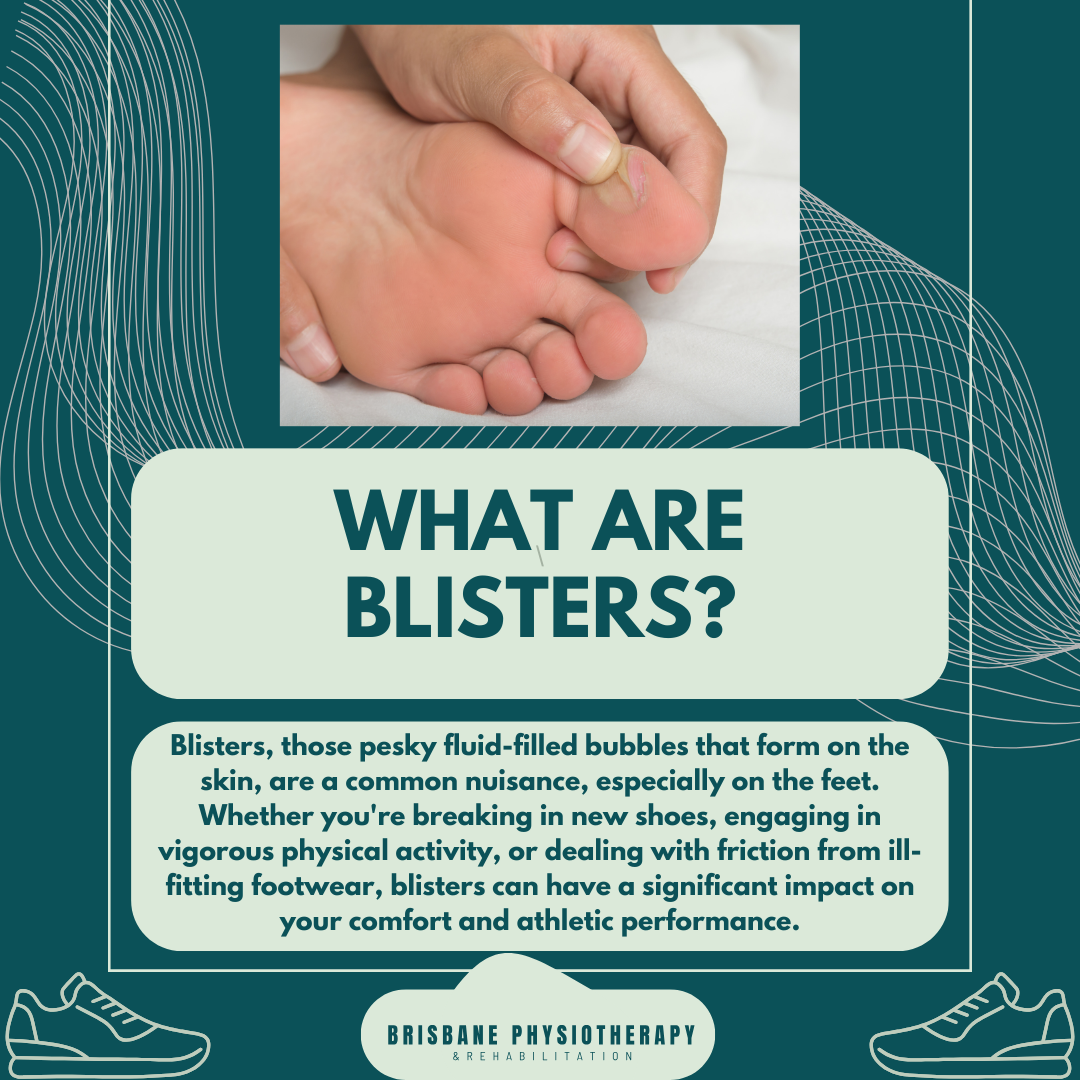What Are Blisters?
Blisters, those pesky fluid-filled bubbles that form on the skin, are a common nuisance, especially on the feet. Whether you're breaking in new shoes, engaging in vigorous physical activity, or dealing with friction from ill-fitting footwear, blisters can have a significant impact on your comfort and athletic performance.
Understanding Foot Blisters
Foot blisters typically occur when the outer layer of the skin (epidermis) separates from the inner layers due to friction or pressure, creating a pocket of fluid underneath. While blisters can develop anywhere on the foot, they often form on areas subjected to repeated rubbing or friction, such as the heels, toes, and sides of the foot.
Causes of Foot Blisters
Several factors contribute to the formation of foot blisters, including:
Friction: Continuous rubbing or friction against the skin, often caused by poorly fitting shoes, can trigger the development of blisters. This is especially common during activities that involve repetitive movements, such as sport, running or hiking.
Moisture: Excessive moisture or sweat accumulation inside shoes can soften the skin and increase susceptibility to blister formation, particularly in humid or wet conditions.’
Heat: Prolonged exposure to heat, such as walking barefoot on hot surfaces or wearing tight, non-breathable footwear in warm weather, can lead to friction-induced blisters.
Prevention Strategies
Preventing foot blisters begins with proactive measures to minimize friction and protect vulnerable areas of the feet. Here are some prevention tips to consider:
Choose Proper Footwear: Opt for well-fitted shoes with ample toe room and cushioning to reduce pressure and friction. Avoid shoes with seams or rough patches that may rub against the skin.
Moisture Management: Keep your feet dry by wearing moisture-wicking socks and changing them regularly, especially during intense physical activity or in hot weather. Consider using foot powders or antiperspirants to minimize sweat accumulation.
Break-in New Shoes: Gradually break in new shoes by wearing them for short periods initially and gradually increasing wear time to allow the shoes to mold to your feet without causing excessive friction.
Protective Measures: Apply moleskin padding, blister prevention patches, or athletic tape to areas prone to blister formation before engaging in activities that may cause friction.
Stop them before they start. If you start to notice a ‘hot’ or irritated spot before the blister has formed. Apply tape over the area, this will reduce any further friction to the area and decrease the likelihood and severity of blister formation.
Treatment Options
If you do develop a blister, it's essential to treat it promptly to prevent infection and promote healing. Here are some treatment options to consider:
Leave Intact: If the blister is intact, avoid puncturing or draining it, as the fluid acts as a protective barrier against infection. Cover the blister with a cushioning bandage or blister pad to reduce friction and pressure.
Drain Carefully: If the blister is large, painful, or at risk of rupturing, a health professional may choose to drain it under sterile conditions with a sterilized needle and dressing.
Keep Clean and Dry: Keep the blister and surrounding area clean and dry to prevent infection. Avoid exposing the blister to further friction or pressure until it heals completely.
Don’t Tear It. If your blister has popped, avoid tearing off the loose skin as this can create further pain and discomfort.
Avoid making it worse: If you develop a blister, don’t apply tape directly to over it, as this can rip the blister off when removing the tape.
Conclusion
Foot blisters may be a common annoyance, but with the right preventive measures and prompt treatment, you can minimize their impact and keep your feet comfortable. By understanding the causes of foot blisters and implementing proactive strategies to reduce friction and pressure, you can enjoy your favorite activities without the worry of painful blisters. Remember to prioritize foot care, invest in proper footwear, and address blisters promptly to maintain healthy, happy feet. If you have persistent blistering or concerns about foot health, consult with a healthcare professional for personalized advice and treatment recommendations.

